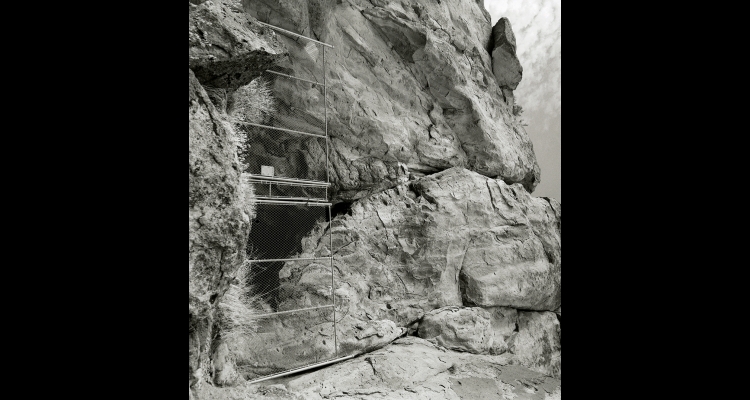Toquima Cave
Toquima Cave is located within the Humboldt-Toiyabe National Forest, about twenty-five miles southeast of Austin, the last half of this distance being reached by traveling over a dirt road. The site was listed in the National Register of Historic Places in 2002 and was excavated as part of a larger study conducted by the American Museum of Natural History throughout the Monitor Valley.
The cave is a large rock shelter utilized by Native American peoples as a temporary dwelling between 3,000 and 1,500 years ago. Because it was never used for long-term occupation, few artifacts were recovered from excavations in the cave; however, there are a large number of pictographs (rock paintings) on the north and south walls of the cave.
The pictographs were done in white, red, yellow, and black pigments. The motifs are entirely non-representational, and include many long rows of tick-marks, circular and triangular forms, hand stencils (where pigment is applied to the hand and then pressed against the rock face), and many others mostly applied by finger painting.
Toquima Cave is one of several pictograph sites in Nevada. Native peoples consider it a sacred site and continue to use the location for ceremonial activities. There is a rustic, but developed campground near the site and a chain-link fence across the mouth of the cave to keep visitors at a safe distance. Please respect this locality.
